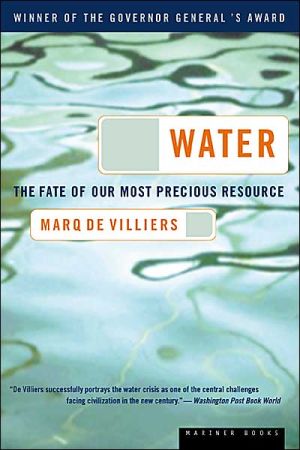Encyclopedia of Science and Technology
Edited by acclaimed science writer and physicist James Trefil, the Encyclopedia's 1000 entries combine in-depth coverage with a vivid graphic format to bring every facet of science, technology, and medicine into stunning focus. From absolute zero to the Mesozoic era to semiconductors to the twin paradox, Trefil and his co-authors have an uncanny ability to convey how the universe works and to show readers how to apply that knowledge to everyday problems.
Search in google:
Edited by acclaimed science writer and physicist James Trefil, the Encyclopedia's 1000 entries combine in-depth coverage with a vivid graphic format to bring every facet of science, technology, and medicine into stunning focus. From absolute zero to the Mesozoic era to semiconductors to the twin paradox, Trefil and his co-authors have an uncanny ability to convey how the universe works and to show readers how to apply that knowledge to everyday problems. Library Journal Prolific science writer Trefil (physics, George Mason Univ.) is a committed advocate for scientific literacy, as evidenced by works he has coedited (e.g., Dictionary of Cultural Literacy) as well as this one-volume encyclopedia. Here he defines key concepts in nearly 1000 entries, arranged alphabetically and color-coded to indicate whether the topic is related to life science, physical science, or technology. Accessible to the general reader, the articles range widely from AIDS and artificial intelligence to welding and the Zeeman effect. The excellent cross references direct the reader to related articles that cover either more fundamental or more advanced information. Color is used to striking effect not only in the 750 high-quality illustrations but also in headings, highlighted definitions, and sidebars. Even the index mirrors the color scheme of the headings. Many articles have brief citations to further reading tucked in the margins. Although it does not have as many entries as The International Encyclopedia of Science and Technology (LJ 4/1/99), this work contains longer articles; and while the larger McGraw-Hill Concise Encyclopedia of Science & Technology (LJ 8/89) provides more depth, it is geared more toward the academic user. With Trefil's focus on scientific literacy, this resource complements the two mentioned above by relating concepts to today's problems. A true pleasure to browse and to read; highly recommended for all libraries. Teresa Berry, Univ. of Tennessee Libs., Knoxville Copyright 2001 Cahners Business Information.
\ \ Chapter One\ \ \ A\ First see Temperature\ Absolute Zero\ Next see Cryogenics\ The lowest temperature theoretically possible, corresponding to -459.67 degrees on the Fahrenheit scale and -273.15 degrees on the Celsius scale.\ \ \ Absolute zero is the lowest temperature that is theoretically possible. It corresponds to a condition of minimum, or zero-point internal energy. That temperature is -459.67 degrees on the Fahrenheit scale and -273.15 degrees on the Celsius temperature scale. It is 0 on the Kelvin temperature scale, which uses the same degrees as the Celsius scale. Although absolute zero has not yet been reached, the techniques of cryogenics—the technology for creating temperatures below -200 degrees Celsius—have come close.\ coolant is treated in such a way that its entropy—the degree of disorder of the atoms or molecules in it—is reduced substantially. One way to accomplish this reduction is to compress a gas or to apply a magnetic field to certain salts. The heat produced by these methods is conducted away from the coolant. When the pressure applied to the gas or the strength of the magnetic field is reduced, substantial cooling results, to the point where gases become liquid. This temperature for hydrogen is about 20 degrees K (or -253 degrees C). Helium liquefies at 4.2 degrees K, then undergoes a marked change in properties at 2.178 degrees K; its viscosity, or frictional resistance, essentially disappears. Liquid helium can be cooled further, to about 0.7 degrees K; the rare isotope helium-3 can be cooled to about 0.04 degrees K by mixing it with the common isotope helium-4. Even lower temperatures, down to 0.00001 degrees K, can be achieved by demagnetization of paramagnetic salts such as iron alum.\ Theoretical Limitations. The apparent failure to reach absolute zero can be explained by the quantum theory, which states that any subatomic particle that oscillates with a simple harmonic motion cannot have a stationary state at which it has zero kinetic energy. In addition, the uncertainty principle—the statement that it is not possible to know both the position and the momentum of a particle with unlimited accuracy—entails that such a panicle cannot be completely at rest, and thus at zero temperature, at exactly the centerpoint of its oscillations.\ properties at temperatures close to absolute zero. Liquids (like liquid helium) lose their viscosity and become "superfluids," and metals are able to "superconduct" electric current with virtually no resistance. Superconductivity was first observed in 1911 in mercury frozen to 4.3 degrees K. Other metals that exhibit superconductivity at temperatures near absolute zero include magnesium, cadmium, zinc, and aluminum.\ \ \ Methods of achieving temperatures near absolute zero are described in Cryogenics and Liquefaction. The behavior of supercooled hellium is described in Superfluid. Theoretical considerations of very cold temperatures are found in Entropy; Heat; Quantum Statistics; and Temperatures.\ \ \ \ Bernstein, Jeremy, Three Degrees Above Zero: Bell Labs in the Information Age (1984); Fairbank, J.D., Near Zero: New Frontiers of Physics (1988); Meredith, P.V.E., Matter at Low Temperatures (1989); Pobell, Frank, Matter and Methods: at Low Temperatures (1992); Von Baeyer, Hans Christain, Warmth Disperses and Time Passes: A History of Heat (1999).\ \ \ First see Force\ Acceleration\ Next see Newton's Laws\ \ \ The rate at which the velocity of a body changes.\ Acceleration is the rate of change of a moving body's velocity. Velocity has two components, speed and direction, and so a body's acceleration is altered by either a change in speed, a change in direction or both. For example, a ball that is being swung at the end of a rope at a constant speed is accelerating even though its speed does not change, because its direction is constantly changing. That acceleration is called centripetal or radial acceleration. The units in which acceleration is expressed include both velocity and time—for example, meters per second per second or feet per second per second. Suppose an automobile accelerates from 10 feet per second to 50 feet per second over a period of 10 seconds. Its acceleration is calculated by dividing 40 feet per second by 10 seconds, to give an acceleration of 4 feet per second per second. (See Rotational Motion.)\ is the result of a force acting on a body. The acceleration a produced by a force F acting on a body of mass m is a = F/m. On Earth, the acceleration of a body near the Earth's surface due to gravity is about 9.8 meters per second per second, or about 32 feet per second per second. In aerospace ventures, the acceleration astronauts experience is sometimes expressed in terms of g, the force of gravity at Earth's surface. An acceleration of "3 g's" can cause an astronaut to black out. (See Force.)\ by a device called an accelerometer, the basic component of which is usually a heavy mass that moves only in one dimension and is supported by springs. An accelerometer measures the force involved in changing the velocity of a body with a given mass. The simplest accelerometer consists of just one weight and has a sliding electrical contact attached to it. As acceleration increases, the weight slips back and a higher voltage is generated. As acceleration decreases, the weight moves forward and a lower voltage is generated. Such an accelerometer can measure acceleration only in one dimension. In aircraft, a set of three accelerometers at right angles to each other is needed to monitor acceleration in all directions. Accelerometers are also able to measure acceleration with the use of a transducer that measures voltage change.\ stresses that aircraft are subjected to and to study the ability of pilots to perform acrobatic maneuvers. They are also used to measure the pickup and braking power of automobiles and the load that tires or wheels experience when rounding curves. (See Automotive Design.)\ \ \ First see Atom\ Accelerator, Particle\ Next see Bubble Chamber\ \ \ A device for creating, propelling, accelerating, and directing atomic particles so that they may interact with each other and with matter and be studied.\ A particle accelerator, sometimes called an "atom smasher," is an electromagnetic machine that produces beams of high-energy subatomic particles such as protons or electrons. These particle beams are used for studies in nuclear physics and, at very high energies, for studies of elementary subatomic particles. The accepted energy unit for a particle accelerator is the MeV, or one million electron volts, the energy acquired by a charged particle when it traverses a potential of one million volts. The largest accelerators, capable of energies of trillions of electron volts, are located at Fermilab in the United States and at CERN laboratories in Switzerland. Particle accelerators can either be linear or circular.\ in the early 1930s, were the cyclotron, the voltage multiplier, and the electrostatic generator. They produced beams of photons and deuterons with energies of a few MeV. More advanced and higher-energy accelerators, such as the synchrotron, the synchrocyclotron, and the proton synchrotron, were developed in the late 1940s. Today's accelerators are in the multi-GeV (Giga-eV, or billion electron volts) energy range. They use the principle of multiple resonance acceleration, in which particles acquire ever higher energies by passing many times through an electric field with a low potential drop.\ \ through circular paths of increasing radius (the acceleration is produced by having the ions move in resonance with an alternating electric field in a magnetic field of constant strength);\ particles pass through a series of cylindrical electrodes, increasing their energy with each pass.\ \ \ The Superconducting Supercollider (SSC)\ During the 1980s, the scientific community made a bold proposal for the construction of a "supercollider" some 52 miles long that would use superconducting magnets to create particle streams with enough energy to explore the structure of elementary particles. In 1993, with 14 miles of the underground tunnel for the SSC dug in Texas, the U.S. Congress stopped funding for what would have been the largest, most complex ... and most costly scientific project in history. Physicists were forced to use existing accelerators more cleverly and focus on other areas of physics. The next advance in this field will be the inauguration of the Large Hadron Collider (LHC) in Geneva in 2005.\ or protons, using a pulsing magnetic field. The electron synchrotron uses a laminated, ring-shaped magnet to provide a guide field with a pulsing magnetic field. The proton synchrotron uses a pulsing ring magnet, with an applied frequency that is increased during the acceleration cycle.\ caused by relativistic effects. Synchrocyclotrons overcome that energy limit by modulating the applied radio frequency to match the decreasing orbital frequency that occurs at high energies. Much higher energies can be achieved, because magnets of significantly greater size can be used. Stable acceleration is obtained by controlling the passage of the accelerated particles, so that they remain in synchrony with the accelerating field for many thousand revolutions. Thus, a synchronous group of particles is accelerated steadily outward, with the individual charged particles in the group traversing circular paths of steadily increasing radius. The energy of such an accelerator is limited by the size and cost of the large solid-core magnets that are required.\ More detailed descriptions of Important accelerator types are in Cyclotron; Linear Accelerator; and Synchrotron. The chief detecting tool for accelerators is described in Bubble Chamber; the chief diagnostic tool in Supercomputer. See also Baryon; Elementary Particle; Lepton; and Quark.\ \ \ Close, Frank, The Particle Explosion (1987); Close, F., The Cosmic Onion: Quarks and the Nature of the Universe (1986); Lee. S.Y., Accelerator Physics (1999); Pais, Abraham, Inward Bound: Of Matter and Forces in the Physical World (1988); Sutton, Christin, The Particle Connection (1984); Trefil, J., From Atoms to Quarks: An Introduction to the Strange World of Particle Physics (1994).\ \ \ First see Atom\ Acids and Bases\ Next see Chemical Reaction\ \ \ Many materials can be classified as either acids, bases, or neutral substances. Familiar acids include vinegar, citric acid, and certain bleaches. Common household bases include ammonia, baking soda, various detergents, and antacids.\ compound whose cation (positively charged ion) is H+, and a base is any ionic compound whose anion (negatively charged ion) is OH-, the hydroxide ion. The Arrhenius definition of acids and bases is that the compounds dissociate (separate) in water to produce these specific ions. Because the hydrogen atom originally consisted of simply one proton and one electron (which is now missing), the H+ cation is really just a lone proton. Thus, the Bronsted-Lowry definition of acids and bases is that an acid functions as a proton donor and a base as a proton acceptor.\ that turn specific colors in the presence of an acid or base. Some of the most common indicators are litmus, which is red in the presence of an acid and blue in the presence of a base, and phenolphthalein, which is colorless in the presence of an acid or neutral, and a bright purple in the presence of a base. Methyl red is red in the presence cfa base or neutral, and yellow in the presence of an acid. (See Chemical Reaction.)\ scale, which ranges from 0 to 14, with numbers less than 7 indicating an acid, 7 itself neutral, and more than 7 indicating a base. One can measure pH with an electric pH meter, or can simply dip specially treated strips of paper into the unknown substance and compare the resulting color to a pH chart. The pH scale indirectly measures the concentration of H+ ions in a solution. To determine acidity or basicity, the relative amounts of ions are compared. If there are more H+ ions than OH- ions, the solution is acidic. If there are more OH- ions, the solution is basic. If the concentrations are equal, the solution is neutral.\ concentrations of OH- ions in solution. It is numerically the mirror image of the pH scale, also running from 0 to 14, but with numbers less than 7 indicating a base and numbers higher than 7 indicating an acid. Pure water is neutral. However, once an acid dissociates in solution, its H+ combines with a molecule of water to form H.sub.3][O+ (a hydronium ion), which means the water is acting as a proton acceptor. Since H2O dissociates into both H+ and OH- ions, water can also act as a proton donor. A substance that can behave as either an acid (proton donor) or a base (proton acceptor) is called amphoteric. (See Water.)\ donor, meaning it dissociates rapidly and its anion component does not easily recombine with the H+. A weak acid is not a good proton donor. It is less likely to part with its proton and more likely to be reunited with it afterwards. The lower the pH number, the stronger the acid. Examples of strong acids include hydrochloric (HCl) and sulfuric (H2SO4) acids. Weak acids include acetic acid (vinegar) and citric acid.\ attracts the proton quickly and then holds onto it very well, and resists surrendering it. A weak base is not a very good proton acceptor. It is more hesitant about picking up the proton and then is more likely to simply let it go. The higher the pH number, the stronger the base. Examples of strong bases include milk of magnesia (magnesium hydroxide) and lye. Weak bases include ammonia (NH3) dissolved in water.\ correlation between strong acids and weak bases. Both of them do not hold protons well and try to give them up at the first opportunity. There is also a connection between strong bases and weak acids. Both of them are better at holding onto protons than at letting them go. From these parallels arises the concept of acid-base conjugate pairs. A conjugate pair is two forms of the same molecule, one of which has a proton that the other one lacks. One member of the pair, the one with the proton, is the acid because it can function as a proton donor. Its conjugate or other half is the base, because it lacks a proton and can therefore act as a proton acceptor. If one member of a pair is strong, its conjugate is weak because they are essentially the same molecule.\ \ \ base, they end up neutralizing each other. The H+ of the acid combines with the OH- of the base to form water. The other two ions, the cation from the base and the anion of the acid, combine to form a salt, which is an ordinary ionic compound without H+ or OH- ions. A chemical salt does not necessarily include sodium, although sodium is a cation in many compounds. (See Salts.)\ life processes, notably in digestion. Many foods contain acids, and many industrial processes use acids. Sulfuric acid is used to make fertilizers, explosives, and dyes. Hydrochloric acid is used to clean metals and in the manufacture of many chemicals. Hydrofluoric acid (HF) is used in glass etching. (See Digestive Chemistry.)\ are used in refining petroleum and in the manufacture of rayon, paper, and soap. Because bases neutralize acids, they are used in medications for upset stomachs. When dissolved in water, bases form electrolytes—ions that conduct electricity. (See Ion; Soil Chemistry; and Titration.)\ \ \ First see Acids and Bases Acid Rain\ Next see Air Pollution\ \ \ A form of air pollution resulting from industrial and automobile activity that add aerosols of such substances as nitric acid and sulfuric acid to the air.\ Acid rain first became prominent in the late 1950s, when Norwegian authorities correlated a decline in local fish populations with increased acidity of precipitation falling on rivers and lakes. Acid rain was considered a European problem until the 1970s, but measurements in the United States showed an increase in the acid concentration of lakes and rainfall in the Northeast.\ precipitation has a pH of 5.6. It is slightly acidic because atmospheric carbon dioxide dissolves in cloud droplets to form weak carbonic acid. In the Adirondack Mountains of New York, the pH levels of some lakes have been measured at 4 to 4.5, at least ten times more acid than normal. (See Acids and Bases.)\ come from burning gasoline, coal, and oil can be transported over long distances in the atmosphere, regions far from major cities can be affected. For example, when sulfur compounds accumulate in the snow near lakes, the spring thaw can bring a short, devastating pulse of acidity. Efforts to reduce acid rain include emission controls on automobiles and on major industrial sources of emissions, such as electric power plants. (See Air Pollution.)\ \ \ First see Sound\ Acoustics\ Next see Architectural Engineering\ \ \ The science that studies the production, properties, and effects of sound on physical surroundings.\ One of the oldest sciences, acoustics was practiced in ancient Greece by such philosophers as Pythagoras and Euclid. While acoustics originally was limited to the study of audible sound in the air, its scope has been expanded to include mechanical waves and vibrations in all materials—solids, gases, and liquids—and waves of any frequency in these media. The unit of frequency of sound is the hertz (Hz), which is one cycle per second. (See Wave.)\ any change in pressure or stress that causes a local change in displacement or density of an elastic medium. In technological applications, a sound source is called a transducer. Standard transducers are electroacoustic—that is, they use electrical action to produce the mechanical vibrations that create sounds. An example is the electrodynamic speaker. It has a coil of wire in a magnetic field. An alternating current through the wire makes the coil oscillate, and its motion is transmitted to a membrane, whose vibrations are radiated as sound. Sound can be produced by other means, such as the flow of air over a rough surface or through a nozzle, as in a jet engine.\ the measure of this transmission is called the intensity of the sound. The unit used to describe intensity (sound levels) is the decibel, which is measured on a logarithmic scale: an increase or decrease of one decibel represents a tenfold increase or decrease in sound level. The logarithmic scale is particularly useful, because one decibel is about the smallest change in sound level that the human ear can detect. Conversational speech at a distance of one yard from the speaker has an intensity of about 60 decibels, while the intensity near a jet engine can be 140 decibels. Sounds over 90 decibels can damage the ear. Noise cancellation systems can reduce the intensity of mechanical sounds such as jet engine hum or traffic noise by 15 percent.\ does not hear sounds below 20 Hz, even those of high intensity. The upper limit for sound reception is about 20,000 Hz for younger people; this can drop to 10,000 Hz or even lower with advancing age. Frequencies above the audible range are called ultrasonic. Ultrasound in the gigabite (billion-hertz) range is put to use in signaling, metallurgy, and medicine. The unit of sound reception is the sone, which is defined as the loudness produced by a 1,000-Hz tone at an intensity of 40 decibels above the minimal audible threshold. (See Ears and Hearing.)\ the transmission of sound within a building such as an auditorium. Listening difficulties can occur in auditoriums because walls tend to be good reflectors of sound waves. For the best listening, there should be no intrusive echoes or resonances, and the reverberation time for sounds should be kept at an optimum. (Reverberation time is the time needed for a sound to decay to one millionth its original intensity.) The reverberation time should be less than one second for speech, from one to two seconds for chamber music and from two to almost four seconds for a large orchestra. (See Sound.)\ sweeping curved surfaces, which can focus sounds, by avoiding large plane surfaces, and by using sound-absorbing material. An excellent acoustic material may have a reflection coefficient—the percentage of sound that it reflects—as low as 0.1, while a highly reflective material such as concrete can have a reflection coefficient close to 1.\ simple ratios for the main dimensions of an enclosure, reducing the reflection of sound waves. Reverberation time must be carefully calculated. If it is too long, speech will sound indistinct and music will not be heard clearly. If reverberation time is too short, music will sound wooden. Poorly contoured walls can create loud and soft spots in an auditorium. The audience also absorbs sound, which must be taken into account.\ \ \ First see Valence\ Actinides\ Next see Radioactivity\ \ \ The group of elements found in the seventh period (row) of the Periodic Table of the elements.\ The actinides are a group of elements found in the seventh period (row) of the Periodic Table. The first element is actinium, the atomic number (Z) of which is 89. The fourteen elements following are called the actinoid series. Like the lanthanides, the actinides are classified as transition elements. They are also called group B metals, and are situated below the main section of the Periodic Table so that the table's columns do not get disrupted. (See Periodic Table.)\ orbital overlap, a curious phenomenon of electron distribution. The electrons (negatively charged particles) of an atom are not located in the nucleus, but are arranged in discrete energy levels, each of which contains a specific number of sublevels, which in turn contain a specific number of orbitals. Proceeding outward from the nucleus, the levels grow progressively larger, with ever-increasing numbers of sublevels and orbitals. By the third and fourth levels, the energy levels are large enough to overlap with each other. This means electrons are being placed in farther levels while inner levels are not yet completely filled. In the actinides, the fifth level is not yet completeley filled, but electrons are already found in the sixth and seventh levels.\ \ \ Excerpted from THE ENCYCLOPEDIA OF SCIENCE AND TECHNOLOGY by . Copyright © 2001 by The Reference Works, Inc.. Excerpted by permission. All rights reserved. No part of this excerpt may be reproduced or reprinted without permission in writing from the publisher. \ \ \ \ \
\ Library JournalProlific science writer Trefil (physics, George Mason Univ.) is a committed advocate for scientific literacy, as evidenced by works he has coedited (e.g., Dictionary of Cultural Literacy) as well as this one-volume encyclopedia. Here he defines key concepts in nearly 1000 entries, arranged alphabetically and color-coded to indicate whether the topic is related to life science, physical science, or technology. Accessible to the general reader, the articles range widely from AIDS and artificial intelligence to welding and the Zeeman effect. The excellent cross references direct the reader to related articles that cover either more fundamental or more advanced information. Color is used to striking effect not only in the 750 high-quality illustrations but also in headings, highlighted definitions, and sidebars. Even the index mirrors the color scheme of the headings. Many articles have brief citations to further reading tucked in the margins. Although it does not have as many entries as The International Encyclopedia of Science and Technology (LJ 4/1/99), this work contains longer articles; and while the larger McGraw-Hill Concise Encyclopedia of Science & Technology (LJ 8/89) provides more depth, it is geared more toward the academic user. With Trefil's focus on scientific literacy, this resource complements the two mentioned above by relating concepts to today's problems. A true pleasure to browse and to read; highly recommended for all libraries. Teresa Berry, Univ. of Tennessee Libs., Knoxville Copyright 2001 Cahners Business Information.\ \







